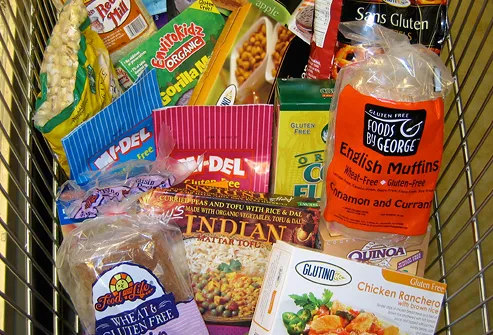
WWW.HEALTHYBARN.COM
Consumers are going to know exactly what they are getting when they buy foods labeled "gluten free."
The Food and Drug Administration is at last defining what a "gluten free" label on a food package really means after more than six years of consideration. Until now, manufacturers have been able to use their own discretion as to how much gluten they include.
Under an FDA rule announced Friday, products labeled "gluten free" still won’t have to be technically free of wheat, rye and barley and their derivatives. But they almost will: "Gluten-free" products will have to contain less than 20 parts per million of gluten.
That amount is generally recognized by the medical community to be low enough so that most people who have celiac disease won’t get sick if they eat it.
People who suffer from celiac disease don’t absorb nutrients well and can get sick from the gluten found in wheat and other cereal grains. Other countries already have similar standards.
Celiac disease affects up to 3 million Americans. It causes abdominal pain, bloating and diarrhea, and people who have it can suffer weight loss, fatigue, rashes and other long-term medical problems. Celiac is a diagnosed illness that is more severe than gluten sensitivity, which some people self-diagnose.
 Only a very small number of people wouldn’t be able to ingest the
amount of gluten that will be allowed under the new rule, FDA officials
said.
Only a very small number of people wouldn’t be able to ingest the
amount of gluten that will be allowed under the new rule, FDA officials
said."Adherence to a gluten-free diet is the key to treating celiac disease, which can be very disruptive to everyday life," FDA Commissioner Margaret A. Hamburg said. "The FDA’s new ‘gluten-free’ definition will help people with this condition make food choices with confidence and allow them to better manage their health."
The rule would also ensure that foods with the labels "no gluten," "free of gluten," and "without gluten" meet the definition. Manufacturers will have a year to comply, but the FDA urged companies to meet the definition sooner.
Many companies that market gluten-free foods already meet the standard. But Andrea Levario of the American Celiac Disease Alliance said the federal guidelines will cut down on painstaking shopping for those who suffer from celiac disease.
Levario said that wheat must be labeled on food packages but that barley and rye are often hidden ingredients in food. The standard will also ensure that companies can’t label products "gluten-free" even if they are cross-contaminated from other products made in the same manufacturing facility.
"Without clear ingredient information and a definitive labeling standard, celiac consumers are playing Russian roulette when it comes to making safe food choices," said Levario. "This will eliminate confusion for the consumer and will cut down on calls to companies to try and determine whether their products are safe and gluten free."
Michael Taylor, FDA deputy commissioner for foods, said the rule originally proposed during the George W. Bush administration was delayed because the agency was evaluating whether standard was correct.
"We wanted to do a careful scientific assessment of the data and the range of sensitivities," Taylor said.
Since the rule was first proposed, gluten-free foods have become big business. Millions of people are buying the foods because they say they make them feel better, even if they don’t have celiac disease. Americans spent more than $4 billion on gluten-free foods last year, according to the American Celiac Disease Alliance, and a major manufacturing survey issued this week suggested that the niche industry is giving an economic boost to the food industry overall.